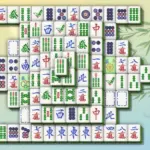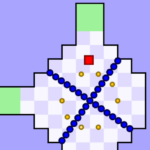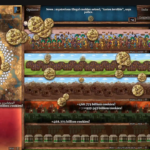In the world of manga and anime, assassins have long been portrayed as sleek, mysterious figures shrouded in darkness. However, Yuto Suzuki’s “Sakamoto Days” turns this trope on its head, presenting a fresh and entertaining take on the assassin genre. This series follows the life of Taro Sakamoto, a legendary hitman who trades his deadly lifestyle for domestic bliss, running a convenience store with his family. Let’s dive into how Read Sakamoto Days Manga Free Online subverts expectations and breathes new life into the assassin manga genre.
The Unconventional Protagonist: Taro Sakamoto
At the heart of “Sakamoto Days” is its protagonist, Taro Sakamoto. Unlike the typical assassin protagonist, Sakamoto is a middle-aged, overweight family man who has left his violent past behind. This stark contrast to the usual lean, brooding assassin archetype immediately sets “Sakamoto Days” apart from its peers.
Sakamoto’s transformation from a feared hitman to a doting father and husband challenges the notion that assassins are incapable of leading normal lives. His struggle to balance his past skills with his current domestic life creates a unique narrative tension that keeps readers engaged. Despite his unassuming appearance, Sakamoto retains his deadly abilities, often using them in comical ways to protect his family and friends.
Subverting Expectations: The Deadly Dad
The juxtaposition of Sakamoto’s deadly skills and his role as a family man creates numerous opportunities for humor and heart-warming moments. Whether he’s using his assassin instincts to perfectly slice vegetables or his combat skills to win prizes at carnival games, Sakamoto’s duality is a constant source of entertainment.
A Diverse Cast of Characters
“Sakamoto Days” doesn’t just challenge tropes with its main character; it populates its world with a colorful cast that defies stereotypes. From Shin, the mind-reading former assassin, to Lu, the triad princess turned convenience store worker, each character brings a unique perspective to the story.
These characters, with their varied backgrounds and abilities, showcase the manga’s commitment to diversity and inclusivity. By presenting assassins and criminals as multifaceted individuals with their own dreams and motivations, “Sakamoto Days” humanizes characters that are often relegated to one-dimensional roles in other series.
The Power of Found Family
One of the most compelling aspects of “Sakamoto Days” is its focus on the concept of found family. Sakamoto’s willingness to take in former assassins and give them a chance at a normal life challenges the lone wolf stereotype often associated with hitmen. This theme resonates strongly with readers, emphasizing the importance of connections and second chances.
Action and Comedy: A Perfect Blend
“Sakamoto Days” excels in blending high-octane action sequences with laugh-out-loud comedy. The series doesn’t shy away from intense fight scenes, but it balances these moments with humorous situations that often arise from the characters’ attempts to maintain a normal life.
This balance is particularly evident in the Amusement Park Arc, where Sakamoto must protect his family from assassins while trying to enjoy a day out at Sugar Park. The juxtaposition of deadly combat and family fun creates a unique tone that sets “Sakamoto Days” apart from more serious assassin manga.
Innovative Fight Scenes
The action sequences in “Sakamoto Days” are not just about showcasing cool moves. They often incorporate everyday objects and situations in creative ways, further emphasizing the clash between Sakamoto’s past and present. These inventive battles keep readers on their toes, never knowing what ordinary item might become a deadly weapon in Sakamoto’s hands.
Challenging the Cycle of Violence
At its core, “Sakamoto Days” questions the inevitability of violence in the assassin genre. By showing Sakamoto’s successful transition to civilian life, the manga suggests that even those with violent pasts can choose a different path. This theme is reinforced through characters like Shin and Lu, who find purpose and belonging in their new lives at Sakamoto’s store.
The series doesn’t ignore the challenges of leaving a life of violence behind. It realistically portrays the difficulties Sakamoto faces in protecting his new life from his old one, creating tension and drama that drive the plot forward.
Redemption and Growth
“Sakamoto Days” places a strong emphasis on character growth and redemption. Characters who start as antagonists often find themselves won over by Sakamoto’s kindness and strength, challenging the notion that people can’t change. This optimistic view provides a refreshing contrast to the often cynical world of assassin fiction.
Cultural Commentary and Satire
Beyond its entertainment value, “Sakamoto Days” offers subtle commentary on various aspects of Japanese society. The series touches on themes such as work-life balance, the importance of community, and the pressure to conform to societal expectations.
By placing these themes in the context of a former assassin’s life, “Sakamoto Days” creates a unique lens through which to examine everyday issues. This clever use of the assassin genre to explore broader societal themes adds depth to the manga, making it more than just a simple action-comedy.
The Assassin Industry as Metaphor
The portrayal of the assassin world in sakamotodays.art can be seen as a metaphor for the cutthroat nature of corporate Japan. Sakamoto’s decision to leave this world behind in favor of a simpler life resonates with readers who may feel trapped in high-pressure careers, offering a fantasy of escape and reinvention.
Visual Storytelling and Art Style
Yuto Suzuki’s art style in “Sakamoto Days” perfectly complements the series’ tone. The contrast between Sakamoto’s round, unassuming appearance and his deadly abilities is visually striking. The art seamlessly transitions from comical, exaggerated expressions to intense, detailed action scenes, mirroring the series’ balance of humor and action.
The visual storytelling in “Sakamoto Days” is particularly noteworthy. Suzuki uses creative panel layouts and visual gags to enhance the comedy and action, making the manga a joy to read and reread. The attention to detail in both character designs and backgrounds brings the world of “Sakamoto Days” to life, making it feel both fantastical and grounded.
Character Design Innovation
The character designs in “Sakamoto Days” challenge traditional manga aesthetics, especially in the assassin genre. From Sakamoto’s rotund figure to the diverse appearances of the supporting cast, the manga embraces a wide range of body types and styles. This diversity in design not only sets the series apart visually but also reinforces its themes of inclusivity and challenging stereotypes.
Impact on the Manga Industry
“Sakamoto Days” has made a significant impact on the manga industry since its debut. Its fresh take on the assassin genre has inspired other creators to think outside the box when it comes to character archetypes and story structures. The series’ success demonstrates that readers are hungry for stories that challenge conventions and offer new perspectives on familiar genres.
The manga’s popularity has also led to an anime adaptation, further expanding its reach and influence. As “Sakamoto Days” continues to grow in popularity, it’s likely to inspire more works that blend genres and subvert expectations, potentially reshaping the landscape of action-comedy manga.
Fan Reception and Community
The unique approach of “Sakamoto Days” has fostered a passionate fan community. Readers appreciate the series’ blend of action, comedy, and heart, often sharing fan art, theories, and discussions online. This engagement speaks to the manga’s ability to connect with audiences on multiple levels, from its exciting action sequences to its touching family moments.
Conclusion: A New Era for Assassin Manga
“Sakamoto Days” represents a new direction for assassin manga, one that values character development, humor, and heart as much as action and intrigue. By challenging traditional tropes and offering a fresh perspective on the genre, Yuto Suzuki has created a series that stands out in the crowded manga landscape.
As “Sakamoto Days” continues to evolve, it will be exciting to see how it further pushes the boundaries of the assassin genre. Whether you’re a long-time fan of action manga or new to the medium, “Sakamoto Days” offers a unique and entertaining reading experience that’s well worth checking out.
We’d love to hear from you! Have you read “Sakamoto Days”? How do you think it compares to other assassin manga? Share your thoughts and experiences in the comments below, and let’s continue the conversation about this groundbreaking series.



































